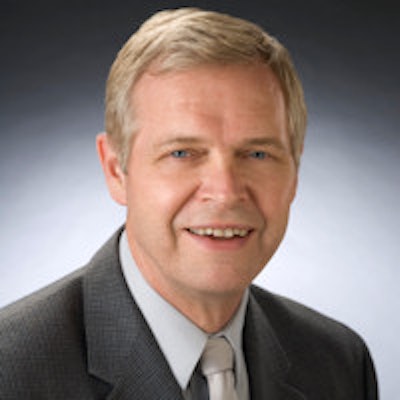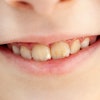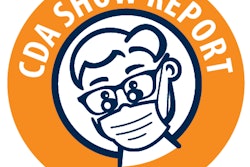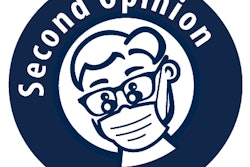
Thank you for your timely and relevant interview with American Association of Pediatric Dentistry (AAPD) President Dr. Edward H. Moody Jr., which ran on November 24 on DrBicuspid.com. In the interview, Dr. Moody discusses how he chooses between treating children in his office, under moderate sedation, or in a hospital under general anesthesia. This paradigm may reflect the choices presented to him in his particular community, but it overlooks an additional option available to many dentists across the U.S.
About 1 out of every 4 elective surgeries in the U.S. is performed in an-office setting, accounting for more than 10 million cases annually, according to Fred E. Shapiro, DO, and colleagues in their recent study in Anesthesia & Analgesia (August 2014, Vol. 119:2, pp. 276-285).This pattern reflects a growing trend that began more than 30 years ago and includes the shifting of a significant number of dental rehabilitation cases out of the hospital and into ambulatory surgery centers or office-based venues.
 Mark Saxen, DDS, PhD, president of the American Society of Dentist Anesthesiologists.
Mark Saxen, DDS, PhD, president of the American Society of Dentist Anesthesiologists.Pediatric dentistry has long recognized and supported properly performed office-based anesthesia, as described in the AAPD clinical practice guidelines (AAPD Reference Manual, Vol. 36:5, pp. 226-229). The interest and acceptance of office-based anesthesia was reflected in a 2012 survey of board-certified pediatric dentists (Anesthesia Progress, Spring 2012, Vol. 59:1, pp. 12-17). In this study, 27% of respondents had worked with a dentist anesthesiologist in their office; however, 60% would use this service if it were available to them in their area.
When one examines the unique training and practice characteristics of dentist anesthesiologists, it is easy to understand the natural fit between these two specialties. The minimum standards for graduation from a Commission on Dental Accreditation (CODA)-approved residency program in dental anesthesiology calls for completion of 800 cases of deep sedation/general anesthesia, with 125 of them being performed on children younger than age 7. Competency in the anesthetic management of patient with special needs also is emphasized.
A 2011 survey of the American Society of Dentist Anesthesiologists (ASDA) revealed that 42% of their members spent the majority of their practice working with pediatric dentists treating patients between the ages of 2 to 5. Three-quarters of ASDA members reported working with dentists who treat patients with special needs.
“Dentists may overlook a valuable resource for both consultation and treatment if they do not consider the availability of dentist anesthesiologists who perform office-based anesthesia.”
Economic factors continue to be a major factor in the migration of elective cases from the hospital operating room to the office. Stephanie Rashewsky, DMD, and colleagues recently compared the cost of performing dental rehabilitation in a hospital operating room to the office-based practice of the Stony Brook School of Dental Medicine (Anesthesia Progress, Winter 2012, Vol. 59:4, pp. 147-153). After controlling for anesthesia time and procedures, the cost of hospital-based general anesthesia was found to be 13.2 times greater than the cost for general anesthesia in the office-based practice of the dental school.
There are at least two very important reasons for bringing office-based anesthesia into this discussion. First, as the availability of hospital-based general anesthesia continues to shrink, so will the ability of pediatric dentists to schedule their cases for general anesthesia in the operating room. This was glaringly demonstrated this past summer, in Sacramento, when Sutter Medical Center was on the verge of becoming the last in a long line of hospitals to close its dental surgery program. The hospitals claimed they were unable to manage the volume of cases needing general anesthesia at current reimbursement rates. While certain, medically fragile children will always require hospitalization for dental rehabilitation, office-based anesthesia was discussed as an excellent alternative for many of these cases.
Dentists may overlook a very valuable resource for both consultation and treatment if they do not consider the availability of physician and dentist anesthesiologists who perform office-based anesthesia. Dr. Moody recommends that dentists pick up the phone and call their pediatric dentist when questions regarding the sedation of a child arise. I readily concur, but would also add the option of contacting a dentist anesthesiologist or physician anesthesiologist in your area with those questions. This type of multispecialty communication enhances the safety of our pediatric patients while opening up additional options for treatment.
Mark Saxen, DDS, PhD, has provided office-based anesthesia to dental practices in the greater Indianapolis area for more than 20 years. He also served as a clinical associate professor for 16 years at the Indiana University School of Dentistry, where he directed courses in pharmacology, pain and anxiety control, and graduate anesthesia training for the oral and maxillofacial and pediatric dentistry residency programs. He currently serves as the president of the American Society of Dentist Anesthesiologists.
The comments and observations expressed herein do not necessarily reflect the opinions of DrBicuspid.com, nor should they be construed as an endorsement or admonishment of any particular idea, vendor, or organization.



















